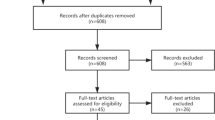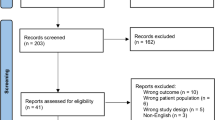Abstract
Purpose
Achieving a balanced knee is accepted as an important goal in total knee arthroplasty; however, the definition of ideal balance remains controversial. This study therefore endeavoured to determine: (1) whether medio-lateral gap balance in extension, midflexion, and flexion are associated with improved outcome scores at one-year post-operatively and (2) whether these relationships can be used to identify windows of optimal gap balance throughout flexion.
Methods
135 patients were enrolled in a multicenter, multi-surgeon, prospective investigation using a robot-assisted surgical platform and posterior cruciate ligament sacrificing gap balancing technique. Joint gaps were measured under a controlled tension of 70–90 N from 10°–90° flexion. Linear correlations between joint gaps and one-year KOOS outcomes were investigated. KOOS Pain and Activities of Daily Living sub-scores were used to define clinically relevant joint gap target thresholds in extension, midflexion, and flexion. Gap thresholds were then combined to investigate the synergistic effects of satisfying multiple targets.
Results
Significant linear correlations were found throughout extension, midflexion, and flexion. Joint gap thresholds of an equally balanced or tighter medial compartment in extension, medial laxity ± 1 mm compared to the final insert thickness in midflexion, and a medio-lateral imbalance of less than 1.5 mm in flexion generated subgroups that reported significantly improved KOOS pain scores at one year (median ∆ = 8.3, 5.6 and 2.8 points, respectively). Combining any two targets resulted in further improved outcomes, with the greatest improvement observed when all three targets were satisfied (median ∆ = 11.2, p = 0.002).
Conclusion
Gap thresholds identified in this study provide clinically relevant and achievable targets for optimising soft tissue balance in posterior cruciate ligament sacrificing gap balancing total knee arthroplasty. When all three balance windows were achieved, clinically meaningful pain improvement was observed.
Level of Evidence
Level II.






Similar content being viewed by others
References
Australian Orthopaedic Association National Joint Registry Annual Report. 2019; 221. Available at: https://aoanjrr.sahmri.com/annual-reports-2019.
National Joint Registry (UK) (2018) 137. Available at: https://reports.njrcentre.org.uk/.
Swedish Knee Arthroplasty Registry, Annual Report. 2018; 39. Available at: http://myknee.se/en/publications/annual-reports.
Aunan E, Kibsgård TJ, Diep LM, Röhrl SM (2015) Intraoperative ligament laxity influences functional outcome 1 year after total knee arthroplasty. Knee Surg Sports Traumatol Arthrosc 23(6):1684–1692
Azukizawa M, Kuriyama S, Nakamura S, Nishitani K, Lyman S, Morita Y et al (2018) Intraoperative medial joint laxity in flexion decreases patient satisfaction after total knee arthroplasty. Arch Orthop Trauma Surg 138(8):1143–1150
Bellemans J, Colyn W, Vandenneucker H, Victor J (2012) Is neutral mechanical alignment normal for all patients? The concept of constitutional varus. Clin Orthop 470(1):45–53
Bonnefoy-Mazure A, Lübbeke A, Miozzari HH, Armand S, Junior YS, Turcot K, et al. (2020) Walking speed and maximal knee flexion during gait after total knee arthroplasty: minimal clinically important improvement are not determinable; patient acceptable symptom state are potentially useful. J Arthroplasty:2865–2871
Connelly JW, Galea VP, Rojanasopondist P, Matuszak SJ, Ingelsrud LH, Nielsen CS et al (2019) Patient acceptable symptom state at 1 and 3 years after total knee arthroplasty: thresholds for the Knee Injury and Osteoarthritis Outcome Score (KOOS). J Bone Joint Surg Am 101(11):995–1003
Connelly JW, Galea VP, Rojanasopondist P, Nielsen CS, Bragdon CR, Kappel A et al (2020) Which preoperative factors are associated with not attaining acceptable levels of pain and function after TKA? Findings from an international multicenter study. Clin Orthop 478(5):1019–1028
Cool CL, Jacofsky DJ, Seeger KA, Sodhi N, Mont MA (2019) A 90-day episode-of-care cost analysis of robotic-arm assisted total knee arthroplasty. J Comp Eff Res 8(5):327–336
Giesinger K, Hamilton D, Jost B, Holzner B, Giesinger J (2014) Comparative responsiveness of outcome measures for total knee arthroplasty. Osteoarthr Cart 22(2):184–189
Golladay GJ, Bradbury TL, Gordon AC, Fernandez-Madrid IJ, Krebs VE, Patel PD et al (2019) Are patients more satisfied with a balanced TKA? J Arthroplasty 34(7):S195–S200
Griffin FM, Insall JN, Scuderi GR (2000) Accuracy of soft tissue balancing in total knee arthroplasty. J Arthroplasty 15(8):970–973
Gustke KA, Golladay GJ, Roche MW, Elson LC (2014) Anderson CR (2014) Primary TKA patients with quantifiably balanced soft-tissue achieve significant clinical gains sooner than unbalanced patients. Adv Orthop 1:1–6
Halawi MJ, Jongbloed W, Baron S, Savoy L, Williams VJ, Cote MP (2019) Patient dissatisfaction after primary total joint arthroplasty: the patient perspective. J Arthroplasty 34(6):1093–1096
Higuchi H, Hatayama K, Shimizu M, Kobayashi A, Kobayashi T, Takagishi K (2009) Relationship between joint gap difference and range of motion in total knee arthroplasty: a prospective randomised study between different platforms. Int Orthop 33(4):997–1000
Hirschmann MT, Becker R, Tandogan R, Vendittoli P-A, Howell S (2019) Alignment in TKA: what has been clear is not anymore! Knee Surg Sports Traumatol Arthrosc:2037–2039
Howell SM, Hull ML, Mahfouz M (2014) Kinematic alignment in total knee arthroplasty. Arthropaedia 1(1):44–53
Hughes RE, Zheng H, Hallstrom BR (2018) Michigan arthroplasty registry collaborative quality initiative (MARCQI) report: 2012–2017. University of Michigan. Ann Arbor:39
Kamenaga T, Muratsu H, Kanda Y, Miya H, Kuroda R, Matsumoto T (2018) The influence of postoperative knee stability on patient satisfaction in cruciate-retaining total knee arthroplasty. J Arthroplasty 33(8):2475–2479
Kayani B, Konan S, Tahmassebi J, Pietrzak J, Haddad F (2018) Robotic-arm assisted total knee arthroplasty is associated with improved early functional recovery and reduced time to hospital discharge compared with conventional jig-based total knee arthroplasty: a prospective cohort study. Bone Joint J 100(7):930–937
Kvien TK, Heiberg T, Hagen KB (2007) Minimal clinically important improvement/difference (MCII/MCID) and patient acceptable symptom state (PASS): what do these concepts mean? Ann Rheum Dis 66(suppl 3):40–41
Le DH, Goodman SB, Maloney WJ, Huddleston JI (2014) Current modes of failure in TKA: infection, instability, and stiffness predominate. Clin Orthop 472(7):2197–2200
Longo UG, Candela V, Pirato F, Hirschmann MT, Becker R, Denaro V (2020) Midflexion instability in total knee arthroplasty: a systematic review. Knee Surg Sports Traumatol Arthrosc:1–11
Lungu E, Desmeules F, Dionne CE, Belzile ÉL, Vendittoli P-A (2014) Prediction of poor outcomes six months following total knee arthroplasty in patients awaiting surgery. BMC Musculoskelet Disord 15(1):299–310
McEwen P, Balendra G, Doma K (2019) Medial and lateral gap laxity differential in computer-assisted kinematic total knee arthroplasty. Bone Joint J 101(3):331–339
Murer M, Falkowski A, Hirschmann A, Amsler F, Hirschmann MT (2020) Threshold values for stress radiographs in unstable knees after total knee arthroplasty. Knee Surgery, Sports Traumatology, Arthroscopy: Official Journal of the ESSKA
Nagai K, Muratsu H, Matsumoto T, Miya H, Kuroda R, Kurosaka M (2014) Soft tissue balance changes depending on joint distraction force in total knee arthroplasty. J Arthroplasty 29(3):520–524
Nagai K, Muratsu H, Takeoka Y, Tsubosaka M, Kuroda R, Matsumoto T (2017) The influence of joint distraction force on the soft-tissue balance using modified gap-balancing technique in posterior-stabilized total knee arthroplasty. J Arthroplasty 32(10):2995–2999
Nilsdotter A-K, Toksvig-Larsen S, Roos E (2009) A 5 year prospective study of patient-relevant outcomes after total knee replacement. Osteoarthr Cart 17(5):601–606
Rivière C, Lazic S, Boughton O, Wiart Y, Vïllet L, Cobb J (2018) Current concepts for aligning knee implants: patient-specific or systematic? EFORT Open Rev 3(1):1–6
Roos E. KOOS FAQs. 2019; http://www.koos.nu/index.html. Accessed Dec 13, 2019.
Roos EM, Toksvig-Larsen S (2003) Knee injury and Osteoarthritis Outcome Score (KOOS)–validation and comparison to the WOMAC in total knee replacement. Health Qual Life Outcomes 1(1):1–10
Shalhoub S, Lawrence JM, Keggi JM, Randall AL, DeClaire JH, Plaskos C (2019) Imageless, robotic-assisted total knee arthroplasty combined with a robotic tensioning system can help predict and achieve accurate postoperative ligament balance. Arthroplasty Today 5(3):334–340
Sheth NP (2020) Which preoperative factors are associated with not attaining acceptable levels of pain and function After TKA? Findings from an International Multicenter Study. Clin Orthop 478(5):1029–1030
Siddiqi A, Smith T, McPhilemy JJ, Ranawat AS, Sculco PK, Chen AF (2020) Soft-tissue balancing technology for total knee arthroplasty. J Bone Joint Surg Am 8(1):1–15
Tsukiyama H, Kuriyama S, Kobayashi M, Nakamura S, Furu M, Ito H et al (2017) Medial rather than lateral knee instability correlates with inferior patient satisfaction and knee function after total knee arthroplasty. Knee 24(6):1478–1484
Twiggs JG, Wakelin EA, Fritsch BA, Liu DW, Solomon M, Parker D et al (2019) Clinical and statistical validation of a probabilistic prediction tool of total knee arthroplasty outcome. J Arthroplasty 34(11):2624–2631
Van Onsem S, Van Der Straeten C, Arnout N, Deprez P, Van Damme G, Victor J (2016) A new prediction model for patient satisfaction after total knee arthroplasty. J Arthroplasty 31(12):2660–2667
Acknowledgements
The authors would like to acknowledge the critical data collection and study administration performed by: Jayne Crofut, Katie Mabee, Sharon Stewart, Cindy Murphy, Kathryn Darley and Alex Friedl, and the data processing and analysis performed by Anna Geraghty. We dedicate this work to the memory of Dr. Leonid Dabuzhsky, 1952 –2019. Dr Dabuzhsky was extremely passionate and actively involved in this project from the start. His contribution was immense, and his unwavering dedication to his patients’ care will continue to inspire us.
Funding
No external funding was provided for this study.
Author information
Authors and Affiliations
Contributions
EW designed study, performed statistical analysis, interpretation of results and drafted manuscript. SS designed study, assisted in interpretation of results and edited manuscript, JL, JK, JD, AR, CEP, JAK assisted in study design, performed clinical data capture and clinical interpretation of results, and reviewed manuscript, SL developed and reviewed statistical analysis methodology and assisted in drafting and editing the manuscript, CP conceived and designed study, assisted in interpretation of results and drafting and editing the manuscript.
Corresponding author
Ethics declarations
Conflict of interest
EW, SS: paid employees of Corin. CP: paid employee, stock options in Corin. JL: paid consultant and speaker to Corin and Stryker. JK: paid consultant, speaker and research support from Corin. JD: paid consultant, speaker and research support Corin, Smith and Nephew and Zimmer Biomet. Royalties from Zimmer Biomet AR: paid consultant, speaker and research support to Corin. CEP: paid consultant, speaker, research support and Royalties from Corin. Paid consultant to Styker and Med 7. Share holder of Joint Development LLC JAK: paid consultant, research support, paid speaker and royalties from Corin SL: paid consultant from Corin and Cell Source (Tokyo).
Ethical approval
Ethical approval was obtained for this study through New England Independent Review Board (No: 120170260).
Informed consent
Informed consent was obtained for all patients within this study before participating in study protocol.
Additional information
Publisher's Note
Springer Nature remains neutral with regard to jurisdictional claims in published maps and institutional affiliations.
Supplementary Information
Below is the link to the electronic supplementary material.
Rights and permissions
About this article
Cite this article
Wakelin, E.A., Shalhoub, S., Lawrence, J.M. et al. Improved total knee arthroplasty pain outcome when joint gap targets are achieved throughout flexion. Knee Surg Sports Traumatol Arthrosc 30, 939–947 (2022). https://doi.org/10.1007/s00167-021-06482-2
Received:
Accepted:
Published:
Issue Date:
DOI: https://doi.org/10.1007/s00167-021-06482-2




